COMPAGNIE
GÉNÉRALE TRANSATLANTIQUE had it first real peak in the BELLE ÉPOQUE, when liners transfered from mere ferries to Grand Hotels. It was the
time when steam ships and steam technology became more secure and passengers
demanded for more luxuries on board. BELLE ÉPOQUE was an era, characterized by prosperity and
affluence for the aristocracy and bourgeoisie, optimism, a new class - the laborers,
social reforms, new arts and peace in Europe. But it was also a period of
imperialism, building of colonial empires, strickt if not rude social
regulations and militarism in each rank of societies.
by Earl of Cruise
by Earl of Cruise
FRANCE (II), Le Versailles sur la Mer, what made FRANCE appear to be bigger than 23,000 GT, was the white coated Main Deck - colouring courtsey by Daryl LeBlanc
French imperialism was in its prime. It was a
cultural center of global influence, and its educational, scientific and
medical institutions were at the leading edge of Europe. But France, as any other
industrialized or industrializing country, had a large economic underclass who
never experienced much of the BELLE ÉPOQUE's wonders and
entertainments. Poverty remained endemic in these countries and leading to
emmigration.
BELLE ÉPOQUE style was an oppulent recalling and mixing of historic styles and art forms, but ended in Art Nouveau (France), Jugendstil (Germany), Style Liberty (Britain) and Wiener Sezession (Austria-Hungary).
While the steam technology improved, the vessels itself grew nearly each year. It was a time with new inventions and reinventions of forgotten technologies. Medicine improved. And travel started to become an art. Up to the BELLE ÉPOQUE there had been a few really luxurious hotels, most in France, where luxury was "invited" in the times of Louis XIV. The first of these Grand Hotels was surprisingly the GRAND HOTEL in Covent Garden, United Kingdom, in 1729. The first real 5star Grand Hotel was the TREMONT HOUSE in Boston, 1829 - 170 luxurious rooms and French Cuisine. Hôtel Le Meurice, [otɛl møʁis], founded in 1771, but opend in 1815, by Charles-Augustin Meurice, Rue de Rivoli 228 in the 1st arrondissement, now owned by Brunei Investment Agency of Brunei and operated by the Dorchester Collection, today the oldest top luxury, palace hotel in Paris.
During BELLE ÉPOQUE the most still today known famed Café Parisienne had been established. These ventured into literary salons. And these Cafès at the time considered an etiquette school for fine manners, social behavior, and tact and secured the visitors a spiritual and cultural peak. Many aristocrats, writers, poets, philosophers, composers, painters and musicians. Here stimulating conversations resulted in the latest issues of the time and discussed spirited literary, philosophical and musical works for hours.
Paris became la Ville Spectacle and la Ville de Lumière, because of early near complete electrification.
BELLE ÉPOQUE style was an oppulent recalling and mixing of historic styles and art forms, but ended in Art Nouveau (France), Jugendstil (Germany), Style Liberty (Britain) and Wiener Sezession (Austria-Hungary).
While the steam technology improved, the vessels itself grew nearly each year. It was a time with new inventions and reinventions of forgotten technologies. Medicine improved. And travel started to become an art. Up to the BELLE ÉPOQUE there had been a few really luxurious hotels, most in France, where luxury was "invited" in the times of Louis XIV. The first of these Grand Hotels was surprisingly the GRAND HOTEL in Covent Garden, United Kingdom, in 1729. The first real 5star Grand Hotel was the TREMONT HOUSE in Boston, 1829 - 170 luxurious rooms and French Cuisine. Hôtel Le Meurice, [otɛl møʁis], founded in 1771, but opend in 1815, by Charles-Augustin Meurice, Rue de Rivoli 228 in the 1st arrondissement, now owned by Brunei Investment Agency of Brunei and operated by the Dorchester Collection, today the oldest top luxury, palace hotel in Paris.
During BELLE ÉPOQUE the most still today known famed Café Parisienne had been established. These ventured into literary salons. And these Cafès at the time considered an etiquette school for fine manners, social behavior, and tact and secured the visitors a spiritual and cultural peak. Many aristocrats, writers, poets, philosophers, composers, painters and musicians. Here stimulating conversations resulted in the latest issues of the time and discussed spirited literary, philosophical and musical works for hours.
Paris became la Ville Spectacle and la Ville de Lumière, because of early near complete electrification.
"Pratiquer
la musique, danser, jouer du théâtre, converser, se comporter avec goût et
agrément —ici, on
cultivait tout cela comme un art particulier. Ce n'étaient pas les affaires
militaires, politiques ou commerciales qui occupaient la place prépondérante
dans la vie de chacun, non plus que de la société dans son ensemble; le
premier regard qeu le Viennois moyen jetait chaque matin à son journal ne se
portait pas sur les discussions du Parlement ou les événements mondiaux, mais
sur le répertoire du théâtre, lequel prenait une importance dans la vie
publique qu'on n'eût guère comprise dans d'autres villes."
Le monde d'hier (Die Welt von Gestern / The World of Yesterday)
Stefan Zweig (1881-1942)
|
It was the time when women´s gowns à la mode had the Cul
de Paris (ky də paʀi) 1872–1876 and
1882–1886 (1st and 2nd Tournure/Hoop Skirt) and gemtlemen wore cylinders or elegant hats
with their different dresses during the day.
Les Deux Magots was
opened in 1875 and thousands of visitors since then attracted through the
centuries, among which had been Hemingway,
Jean-Paul Sartre and Picasso.
The Spanish painter has met on the rooftop terrace of the cafe of the talented
photographer Dora Maar,
who became his companion and muse over the course of time, her charisma
inspired him to many of his masterpieces. Some researchers even pose the thesis
that Picasso created Cubism here!
Le Deux Magots, a Saint Germain Des Pres - courtsey G.francesca
Café de Flor, founded in 1887, is today another way to explore the character and
style of that era and its prevailing trends - the Golden Café has gained
prominence when Guillaume Apollinaire transformed the first floor into his study and regularly housed since André Breton
(the founder of Dadaism). If you are lucky, you might meet today world-famous
stars personally in this Cafè - Robert De Niro, Al Pacino and Johnny Depp enjoy
breakfast here quite often! Other etablissements, still famed today, have been
founded in those days, 1893 Maxim's by Maxime Gaillard. Maxim´s became in the 1960s the
caterer for PAN AM ´s First CLass. And not to
forget Moulin Rouge, founded in 1889 by Charles Zidler and Joseph Oller, who also owned the Paris Olympia, close to Montmartre in the Paris district of Pigalle
on Boulevard de Clichy in the 18th arrondissement. And not to forget
the Folies Bergère as another landmark venue.
Poster for Vin Mariani, founded 1863 by Jules Chéret captures the vibrant spirit of BELLE ÉPOQUE
The BELLE ÉPOQUE was too the time of bigottery and double moral
... It happend in these times that cocottes
or courtesans, à la la Païva (Esther
Lachmann [ɛstɛʁ laʃman], May 7th, 1819 - January 21st, 1884)
grew to fame and wealth - so Cora Pearl (1835-1886) and Laure Hayman (1851-1932), Lianede Pougy (July 2nd,1869 - December 26th, 1950) -
dancer, socialite
and courtesan,
the `Queen of Montmartre´ La Goulue (Louise
Weber, July 13th, 1866, - January 30th, 1929) and
Jane Avril (June 9th, 1868 - January 17th,
1943) "La Mélinite",
after an explosive - all to be named demimondaine. BELLE ÉPOQUE too saw a new type of socialite,
coming from bougeoise backgrounds. In the 21st century, the term
"socialite" is still attached to being wealthy and socially
recognized.
Mata Hari, born Margeretha Geertruida Zelle on 7th August
1876 in Leeuwardan, spoilt by her father, married to Rudolf McLeod, a soldier
20 years her senior, May 1879they all
set off to the east Indies as Rudolf returned to service.
Tineke Hellwig writes that "Indos had an image of being indolent, unreliable, oversubmissive ... incredibly recklass. The women were known to be sensual, coquettish and seductive.
The couple parted in 1902 with granted custody of her daugther Louise. She had to temporarily turn to prostitution to be able to pay her bills.
"She developed a series of sacred dances that she ostensibly learned in the Indies and began to create a mythology about herself. Her style was utterly novel; her ability to create a mood was strong; and her costumes were extremely revealing."
"She distinguished herself... by claiming hers [dances] were sacred, holy dances - a form of worship, part of a fusion of sexuality and religion."
March 13 1905 was her debut of Mata Hari.
In 1915, she was living back in 'The Hague' and was visited by Karl Kroemer who was recruiting espionage agents for Germany. The rest is known history ... And filmed not only in Hollywood, e.g. the most intense film with La Garbo
Tineke Hellwig writes that "Indos had an image of being indolent, unreliable, oversubmissive ... incredibly recklass. The women were known to be sensual, coquettish and seductive.
The couple parted in 1902 with granted custody of her daugther Louise. She had to temporarily turn to prostitution to be able to pay her bills.
"She developed a series of sacred dances that she ostensibly learned in the Indies and began to create a mythology about herself. Her style was utterly novel; her ability to create a mood was strong; and her costumes were extremely revealing."
"She distinguished herself... by claiming hers [dances] were sacred, holy dances - a form of worship, part of a fusion of sexuality and religion."
March 13 1905 was her debut of Mata Hari.
In 1915, she was living back in 'The Hague' and was visited by Karl Kroemer who was recruiting espionage agents for Germany. The rest is known history ... And filmed not only in Hollywood, e.g. the most intense film with La Garbo
Passengers
began demanding for even those luxuries, they would not have at home ... as
electric light, a security nessessaty, water toiletts and running water in the
cabins - even at home their had been chamber pots and wash bowls, or bath rooms
with tubs - to many of even in First Class a luxury.
ORIENT EXPRESS of COMPAGNIE INTERNATIONAL de WAGONS-LITS near
Gare de L‘ Еst - copy from my book The Belle Époque of the ORIENT EXPRESS by M. Wiesenthal
On October 4th, 1883, the express
train of COMPAGNIE INTERNATIONAL de WAGONS-LITS from the Paris train station
Gare de L‘ Еst took off to Istanbul - nobody has at the time suspected that
ORIENT-EXPRESS transformed after more than a century into a real legend and
popular means of luxurious transport - the synonym for voyaging in luxury with
a train.
While finally the Atlantic liners grew out of their hulls, with added superstructures, space, ever scarce on board ships, grew and more luxuries could be added, as additional salons, except the main dining room. US American liners in the 1860s and 1870s had a kind supuerstructer, a deckhouse streching from the middle of the ship to its stern. The dining room used to be for a long time as well a social room, was along the longitudinal axis of a ship. It was more a hallway with a long table in the middle and benches at its side. Now a Ladies Room, a Smoking Room, a Writing Room and a Library were added in these days, increasing the public space to cover up time, and walk around there and giving space to avoid "unloved" co-passengers on board.
While finally the Atlantic liners grew out of their hulls, with added superstructures, space, ever scarce on board ships, grew and more luxuries could be added, as additional salons, except the main dining room. US American liners in the 1860s and 1870s had a kind supuerstructer, a deckhouse streching from the middle of the ship to its stern. The dining room used to be for a long time as well a social room, was along the longitudinal axis of a ship. It was more a hallway with a long table in the middle and benches at its side. Now a Ladies Room, a Smoking Room, a Writing Room and a Library were added in these days, increasing the public space to cover up time, and walk around there and giving space to avoid "unloved" co-passengers on board.
Source: Wikipedia
When
the GUION
liner ARIZONA (1879) and later ALASKA (1882) had been introduced with a superstructure and a promenade deck, where
passengers could stroll along to get some fresh air and a healthy walk, this
novelty was copied by most new liners. Up to then, a walk on deck was an
adventure, avoiding seamen during their labor with the sails, or other duties,
and no longer stepping over equipment needed to navigate the ship, and without
a chance for breaking ones legs or getting twisted ankles.
For ARIZONA and ALASKA it was a sheer nesccessaty to have a superstructure, as there was not enough room in the hull to accomodate the passengers because the huge machine. It was adopted first by NORDDEUTSCHER LLOYD´s director Hermann Henrich Meier who was influenced by the later director Johann Georg Lohmann for these improvements for the FLÜSSE Class (ELBE, 1881).
The BELLE ÉPOQUE was a time of technical progress, social and cultural vibration and new forms of communication and arts. With the new breed of transatlantic liners too started the Transatlantic Society for real, at first between USA and United Kingdom - Sir Winston Churchill´s mother, Jennie Jerome, was originally from New York, later but too with Continental Europe. The Columbian Exchange took a new step forward. Transcontinental families started to build up.
And with the new wealth created by trade and industry in the USA and the imense furtunes created in Europe, the traveling public became far more willing to sail across the Atlantic with the new kind of liners. For the first time those who could afford a Transatlantic trip to visit relatives on the other side of the pond started travelling, and if only to see or search for their roots in Europe, or see the fortunates in the "Colonies".
Only a few directors and marketing geniusses and foresighted men did realize the opportunities and needs for these new kind of passengers. These men combined the luxuries of the Grand Hotels ashore with the liners - the FLÜSSE Class of NORDDEUTSCHER LLOYD, the AUGUSTA VICTORIA Class (1888) of Albert Ballins HAMBURG AMERIKA LINIE, the LA CHAMPAGNE Class (1886) of COMPAGNIE GÉNÉRALE TRANSATLANTIQUE, INMAN LINE´s City of Paris (1889), City of New York (1888), the first twin screw liners, and earlier City of Rome (1881) and WHITE STAR LINE´s TEUTONIC (1889) and MAJESTIC (1890). CUNARD LINE introduced its UMBRIA and ETRURIA showcasing the latest Victorian interior design (Bric-à-Brac), offering its 550 First Class passengers besides the dining room a ladies room, a smoking and music salon.
For ARIZONA and ALASKA it was a sheer nesccessaty to have a superstructure, as there was not enough room in the hull to accomodate the passengers because the huge machine. It was adopted first by NORDDEUTSCHER LLOYD´s director Hermann Henrich Meier who was influenced by the later director Johann Georg Lohmann for these improvements for the FLÜSSE Class (ELBE, 1881).
The BELLE ÉPOQUE was a time of technical progress, social and cultural vibration and new forms of communication and arts. With the new breed of transatlantic liners too started the Transatlantic Society for real, at first between USA and United Kingdom - Sir Winston Churchill´s mother, Jennie Jerome, was originally from New York, later but too with Continental Europe. The Columbian Exchange took a new step forward. Transcontinental families started to build up.
And with the new wealth created by trade and industry in the USA and the imense furtunes created in Europe, the traveling public became far more willing to sail across the Atlantic with the new kind of liners. For the first time those who could afford a Transatlantic trip to visit relatives on the other side of the pond started travelling, and if only to see or search for their roots in Europe, or see the fortunates in the "Colonies".
Only a few directors and marketing geniusses and foresighted men did realize the opportunities and needs for these new kind of passengers. These men combined the luxuries of the Grand Hotels ashore with the liners - the FLÜSSE Class of NORDDEUTSCHER LLOYD, the AUGUSTA VICTORIA Class (1888) of Albert Ballins HAMBURG AMERIKA LINIE, the LA CHAMPAGNE Class (1886) of COMPAGNIE GÉNÉRALE TRANSATLANTIQUE, INMAN LINE´s City of Paris (1889), City of New York (1888), the first twin screw liners, and earlier City of Rome (1881) and WHITE STAR LINE´s TEUTONIC (1889) and MAJESTIC (1890). CUNARD LINE introduced its UMBRIA and ETRURIA showcasing the latest Victorian interior design (Bric-à-Brac), offering its 550 First Class passengers besides the dining room a ladies room, a smoking and music salon.
LA CHAMPAGNE, Salle à Manger - own collection
The tables, as usual in those days had been arranged as for a banquette, the stools had been fixed to the deck
These BELLE
ÉPOQUE liners
resembled the interior style of the shore based Grand Hotels. But it was at
first Mr. Lohmann of LLOYD and in permanent hanseatic rivalry Albert Ballin of
HAPAG who saw passengers for the first time not only as added cargo and
transfered the Grand Hotel service into liners.
LA CHAMPAGNE, Salon de Conversation, located in the superstruture above the Salle à Manger - own collection
COMPAGNIE
GÉNÉRALE TRANSATLANTIQUE´s rivals in first place had not been across the chanel
but in Germany - LLOYD and HAPAG. And on the British Isles the companies had
been hooked up with their inner British rivalry, relying on `Britannia rules
the waves´, with no focus and real interest towards the continent.
COMPAGNIE GÉNÉRALE TRANSATLANTIQUE´s four sister ships - LA CHAMPAGNE (1886), LA GASCOGNE (1886), LA BOURGOGNE(1886), LABRETAGNE (1886) and earlier fleet mate LA NORMANDIE (1883). Even if carrying the French mail, getting subsidiaries for from the state, and being partly owned by the state, the company withstand the pressure from state officials to build speed queens. But the liners had been at the speed hight of the time, only a bit slower than competitors from across the Chanel. Similar the German liners, never subsidised, did not build speed queens, but within the fast top end of crossing the pond in reasonable time.
COMPAGNIE GÉNÉRALE TRANSATLANTIQUE´s four sister ships - LA CHAMPAGNE (1886), LA GASCOGNE (1886), LA BOURGOGNE(1886), LABRETAGNE (1886) and earlier fleet mate LA NORMANDIE (1883). Even if carrying the French mail, getting subsidiaries for from the state, and being partly owned by the state, the company withstand the pressure from state officials to build speed queens. But the liners had been at the speed hight of the time, only a bit slower than competitors from across the Chanel. Similar the German liners, never subsidised, did not build speed queens, but within the fast top end of crossing the pond in reasonable time.
LA NORMANDIE, the first of Cie. Gle. TRANSATLANTIQUE´s BELLE ÉPOQUE liners - own collection
The five fleet mates reflected the taste of French BELLE
EOQUE´s interior design resembling the Grand Hotels of their days ashore. In
first place this choosen design was for distracting the passengers of being at
see. The French liners but showed too the refinery and best of French cuisine
on board. And a French without good cusine is quite unimaginable.
Hotel de Crillon, Salon Bar after Renovation - courtsey Hotel de Crillon
Food storage in those days improved too by inventing usable
cooling systems. These guaranteed that products stayed longer fresh. And the
neccessaty of mashed potatoes was reduced.
In 1882 a new vessel for COMPAGNIE GÉNÉRALE TRANSATLANTIQUE was laid down at Vicker’s Shipbuilding Company in Barrow-in-Furness in Great Britain. He was called VILLE DE NEW YORK. Progress continued during the year and by late October, time had come to launch the ship. It had a projected gross tonnage of over 6,000 tons - the largest ship in the COMPAGNIE GÉNÉRALE TRANSATLANTIQUE. At the time of launch, the vessel had been renamed NORMANDIE. The liner should have a service speed of over 15 knots to put France for the first time in the race for the prestigious BLUE RIBAND of the Atlantic.
The speed gave other benefits than prestige. The French Government agreed to renew Cie. Gle. TRANSATLANTIQUE’s mail contract because of NORMANDIE’s speed. The annual subsidy was 5,480,000 million Franc Français. Some shipping companies (e.g. CUNARD since 1840) had realised long ago that profitable business was best possible with a mail contract from the Government.
NORMANDIE’s engines were indeed something special for the time. A safety precaution was installed, making the engines capable of running at a slow speed if one of them should fail to work. Many other liners had to stand still in such an event, or use old-fashioned sails if available.
In 1882 a new vessel for COMPAGNIE GÉNÉRALE TRANSATLANTIQUE was laid down at Vicker’s Shipbuilding Company in Barrow-in-Furness in Great Britain. He was called VILLE DE NEW YORK. Progress continued during the year and by late October, time had come to launch the ship. It had a projected gross tonnage of over 6,000 tons - the largest ship in the COMPAGNIE GÉNÉRALE TRANSATLANTIQUE. At the time of launch, the vessel had been renamed NORMANDIE. The liner should have a service speed of over 15 knots to put France for the first time in the race for the prestigious BLUE RIBAND of the Atlantic.
The speed gave other benefits than prestige. The French Government agreed to renew Cie. Gle. TRANSATLANTIQUE’s mail contract because of NORMANDIE’s speed. The annual subsidy was 5,480,000 million Franc Français. Some shipping companies (e.g. CUNARD since 1840) had realised long ago that profitable business was best possible with a mail contract from the Government.
NORMANDIE’s engines were indeed something special for the time. A safety precaution was installed, making the engines capable of running at a slow speed if one of them should fail to work. Many other liners had to stand still in such an event, or use old-fashioned sails if available.
NORMANDIE sailing across the Atlantic, with sails set - copy fom my book Von den Kreuzzügen zu den Kreuzfahrten by B.W. Bathe
February 19th, 1883 NORMANDIE
was ready for the trials. During these trials NORMANDIE managed to reach a very impressive top speed of 17.25
kts. Cie. Gle. TRANSATLANTIQUE
was delighted and gladly received her from the builders in Britain on the
February 27th, 1883 Cie. Gle. TRANSATLANTIQUE had advertised their
new liner keenly, and for the maiden departure to New York from Le Havre on May
5th, 1883 1,066 people were on the
passenger list. Upon arrival in New York it was evident that NORMANDIE would not be able to
capture the BLUE RIBAND from GUION LINE’s ALASKA. Nevertheless, NORMANDIE
had proved a worthy competitor on the North Atlantic and the French Line was
more than happy with NORMANDIE.
NORMANDIE became the role model for the LA CHAMPAGNE Class liners. The liners had a 6 cylinder compound steam engine of 9,000 hp from a 6 cylinder tripel expansion steam engine and achieved 17,5 kts and had around 7,000 GT and above (LA BOURGOGNE was constructed at Forges et Chantiers de la Méditerranée on the Côte d’Azur and had 7,395 GT.
NORMANDIE became the role model for the LA CHAMPAGNE Class liners. The liners had a 6 cylinder compound steam engine of 9,000 hp from a 6 cylinder tripel expansion steam engine and achieved 17,5 kts and had around 7,000 GT and above (LA BOURGOGNE was constructed at Forges et Chantiers de la Méditerranée on the Côte d’Azur and had 7,395 GT.
LA BOURGOGNE, the biggest of the qunited of BELLE ÉPOQUE liners of Cie. Gle. TRANSATLANTIQUE - courtsey coloured by Daryl LeBlanc
These liners had been built at COMPAGNIE GÉNÉRALE
TRANSATLANTIQUE
in Penhoët at Saint-Nazaire, then a part of Cie. Gle. TRANSATLANTIQUE. The
interior design was created by Parisian interior architect and designers Jules Allard et Fils,
then one of the most popular designers of BELLE ÉPOQUE in France, Jules Allard was especially known
for his extravagant fashion design. LA CHAMPAGNE Class was neither the biggest
class of ships nor the fastest, but fast enough, securing the mail contract,
but their luxuries had been exceptionel. 390 First Class passengers, and 65 in
Second Class, found state-of-art accomodations in each of the liners. The 600,
later 1,500, steerage passengers found the typical mass quarters. It was the
high tide of mass emmigration from Europe into the USA.
LA CHAMPAGNE Class vessels deck plan - courtsey Norwegian Heritage
First
Class accomodations offered the latest luxuries, which BELLE EPQUE technique
and fashion could offer. While the dining room still was used as the main
social room, the five liners had a Salon des Dames, a Salon Fumoir and above
the dining room and open to the dining room, one deck below, a Salon de
Conversation. While these liners resembled the "actual fashion of interior
design" and in general the actual internal concept lay-out of the liners.
Similar to the German liners of the FLÜSSE Class and AUGUSTA VICTORIA Class it was the exceptional, pampering, service, including the service à la russe and excellent cuisine on board the French liners. This drew an illustrous list of passengers, as well the laszivous image of France, and Paris especially - those adventurous from prude countries, as the buttoned USA and Victorian prude United Kingdom. On British liners of that time the menues still had service à la française. A style that is dating back to medieval times. And these have been most table d'hôte [tablə.dot] - lit. "table of the host", where the menu where a multi-course meal with only a few choices.
Similar to the German liners of the FLÜSSE Class and AUGUSTA VICTORIA Class it was the exceptional, pampering, service, including the service à la russe and excellent cuisine on board the French liners. This drew an illustrous list of passengers, as well the laszivous image of France, and Paris especially - those adventurous from prude countries, as the buttoned USA and Victorian prude United Kingdom. On British liners of that time the menues still had service à la française. A style that is dating back to medieval times. And these have been most table d'hôte [tablə.dot] - lit. "table of the host", where the menu where a multi-course meal with only a few choices.
LA CHAMPAGNE menu Card First Class from his later days - own collection
The service à la
française, combined with the vast long tables, is disturbing free talk with
your neighbours at your table, not only to the next forward neighbour, but too
for serving yourself and eventually the "unloved" neighbour. With
that service style too dishes tend to get cold. And towering evering on the
plate was even then suggested as uncultured.
All dining rooms, had instead of the Grand Hotels of these days loong tables and lines of stools on both sides, not quite right for free conversation, especially if the neigbour is tied up, for whatever reason, or is in another way "uncomfortable". Then the passenger had to look for another sitting arragement with the Maître d’hôtel [mɛːtʁə d‿otɛl].
When reading in the passenger lists, that had been printed and handed out to the passengers - a source of information about the fellow passengers, but for us today too. Somtimes it seems to like reading a how-is-how of the BELLE RPOQUE society, which became international, while the world was shrinking more and more into a global village. Globalisation was put on another new level. But global we had allways been - it is the human nature, looking behind horizons, searching new frontiers. Only in BELLE ÉPOQUE the wheels turned faster.
All dining rooms, had instead of the Grand Hotels of these days loong tables and lines of stools on both sides, not quite right for free conversation, especially if the neigbour is tied up, for whatever reason, or is in another way "uncomfortable". Then the passenger had to look for another sitting arragement with the Maître d’hôtel [mɛːtʁə d‿otɛl].
When reading in the passenger lists, that had been printed and handed out to the passengers - a source of information about the fellow passengers, but for us today too. Somtimes it seems to like reading a how-is-how of the BELLE RPOQUE society, which became international, while the world was shrinking more and more into a global village. Globalisation was put on another new level. But global we had allways been - it is the human nature, looking behind horizons, searching new frontiers. Only in BELLE ÉPOQUE the wheels turned faster.
This book found by - © Moppenheimer
is a compendium of several passenger lists from January to March 1890, printed for
Cie. Gle. TANSATLANTIQUE by Imprimerie Francois Appel, Paris.
Train lines in France and Europe had
been depicted besides the TRANSAT connections too - © Moppenheimer
It
has a number of wonderful chromolitographics displaying the five above
mentioned liners and their passenger lists, as well wonderful state-of-the-art
advertising like pictures. the book includes too a map with French and international
trans European train connections, including the famous ORIENT EXPRESS of COMPAGNIE INTERNATIONALE des WAGONS-LITS.
LA CHAMPAGNE, as depicted in the passenger list booklet - © Moppenheimer
Further
hotels would have been displayed with whon Cie. Gle. Transatlantique was cooperating with back then.
Reading the
names, research wishes tickled, so
googling ...
January 4th 1890 LA CHAMPAGNE
January 4th 1890 LA CHAMPAGNE
<>
|
Mr. C. C.
E. Fibiger - member of the Danish phatogue and Nobel Price winner Johannes Andreas Grib Fibiger
|
<>
|
Miss
Theodora de Gillert - a primaballerina of the Metropolitan Opera New York, picture
|
<>
|
Mr. Louis Keller - member of the US AMerican high
society, publisher and golf club owner
|
<>
|
Mr. Henry
S(idney) Oppenheimer - born November 2nd 1866 in New York, a
member of the Oppenheimer-Family, nephew of Salomon
Oppenheimer, and a relative to Heinrich Hertz, the man after whom we name the
electrical frequency: Hz
|
<>
|
|
<>
|
Ekko
Sollmann - an inventor from Hoboken, Hudson County, New Jersey, inventor of
the elektrische Eisenbahn (Bild) electric model trains, including the needed models
for passenden Zug (Bild), the German born Ekko Sollmann inveted too hier
|
<>
|
Meyer
Louis van Moppes - a diamond dealer from
Amsterdam
|
January 11th 1890 LA
NORMANDIE
<>
|
Edgar P.
Allen - picture (Mr. Allen in the middle), im Manganhandel
tätig war und später irgendwie seine Finger bei der Ausrüstung der US-Army im
2. Weltkrieg im Spiel hatte.
|
<>
|
Mr Wilber
A. Bloodgood - no information than being the son of William A. Bloodgood and of his death April 6th, 1923
|
<>
|
Mr. Thomas
Cranage und seine Familie - a publication about Thomas Cranage, where his wife (Mrs. Thomas Cranage), his daugther Mary and his son Samuel Pitts Cranage are mentioned
|
<>
|
Mr. John Baptiste Ford Jr - member of the Ford Dynasty, and founder of the US American flat glass industry, picture of his house.
|
LA BOURGOGNE passenger list - © Moppenheimer
LA BORGOGNE sank after a collision with a tremendous loss of lifes ... In certain circles it told, that this was bad seamanship, and lack of disciplin, especially seen with French! An accusation fueled by natinalistic opportunism - when
it comes to a catastrophy, in each of us takes over the survival
instinct. And the strongest is fighting for his own survival ...
passengers and crew! There is noone to be balmed at least. Modern
scientists did prove this human aspect.
<>
|
The Most
Reverend M. A. Corrigan D. D. Archbishop of New York - an important member of
the Catholic Churh of New York, his vitae
|
<>
|
Louis Lasher Lorillard and his brothers Mr Beekman Lorillard and George - tobaco
millioneires of New York, including their entourage of servants
|
January 25th 1890 LA
GASCOGNE
<>
|
Edward D. Adams - constructor
of the Niagara waterfalls power station, where for the first time the Nikola Tesla (best known for his development and
design of the modern alternating current/AC) electricity supply system was used
|
<>
|
Mr
Beauveau Borie und Familie - Mr. Borie was according to his University-Annales a
manufacturer, banker and broker (a painting of his wife and son), Mr. Borie
and his son had been president of the New York Stock Exchange
|
<>
|
Alban G.
Anderson no information about him, but his death
|
<>
|
Family
Vanderbilt Sloane - member of the railroad dynasty, including two daughter of
William Henry (who had a fortune of US$ 231,6 milliard /
compared to todays worth, Emily (later
married to Henry White (March
29, 1850 – July 15, 1927) a prominent U.S.
diplomat during the 1890s and 1900s, and one of the signers of the Treaty of Versailles, and L. (Margaret Louisa?) who
later owned Elm Court in Massachussetts.
Malcolm Douglas Sloane, later owner of the legendary Swope-Mansion, waa among the group of William
Henry.
|
<>
|
Mr.
E(manuel) Wertheimer - a German-Austrian, of
Hungarian descent, philosopher and writer of aphorisms
|
February 8th 1890 LA
NORMANDIE
<>
|
Mr.
Hyppolyte (Hipp) Didisheim - Swiss manufacturer of the renowned Marvin-Watches (for English click change
button)
|
February 15th 1890 LA
BRETAGNE
<>
|
Ursula
Figi - a Swiss Mormon emmigrant
|
<>
|
J. J.
Glessner - partner
in the firm of Warder, Bushnell & Glessner, a farm
machinery manufacturer headquartered in Springfield, Ohio
|
<>
|
A(bbott)
Lawrence Lowell - writer, lawyer and –
Autor, Jurist, political scientist and president of Harvard-University from 1909 to 1933, brother of the astronomer Percival Lowell and womens right activist Amy Lawrence Lowell, an American
poet, who
posthumously won the Pulitzer Prize for Poetry in 1926, member of the wealthyiest und
Mitglied der reichsten Patrizierfamilien Bostons, the Boston Brahmins
|
<>
|
Miss
Violette E. Scharff - writer
|
<>
|
Mr. Milton Weil - co-founder of the oldest US
classical music publishing paper: Musical America
|
February 22nd 1890 LA GASCOGNE
<>
|
Mrs.
W(illia)m (Waldorf) Astor (Mary) - born Dahlgren Paul, wife of William Waldorf "Willy" Astor, 1st Viscount Astor (March 31st, 1848 - October 18th, 1919) a wealthy
American-born attorney, politician, businessman, and newspaper publisher. He
moved with his family to England in 1891, became a British subject in 1899,
and was made a peer as Baron Astor
in 1916 and Viscount Astor in
1917 for his contributions to war charities. He was a prominent member of the
Astor family. His middle name is referring to the village Walldorf, from were
the Astor family emmigrated. At the time of her crossing, William was starting the construction of the
WALDORF-ASTORIA HOTEL, with his cousin John Jacob Astor IV, who later drowned on
board TITANIC. This first WALDORF-ASTORIA was located were we find today the
EMPIRE STATE Building and prior an Astor mansion had been errected. "No
wonder why Mary escaped to Europe."
|
<>
|
Georges de la Bouglise - a French mining engineer and co-inventor/develpoer with Pierre Michaux, Pierre Lallement and the Olivier brothers of the front-steerable high wheel velocipede
(Michaux-velocipede)
|
<>
|
Mr. M. De
Forest Bolmer - US American painter
|
<>
|
Alfred N.
Beadleton - owner of an brewery, who died in the White Mountains August 10th 1917 NEW YORK TIMES article
|
<>
|
Mr.
Nouailhac-Pioch and his French engineering collegues, who had been engaged in
the construction of the PANAMA CANAL till 1899 took over, what became a
disaster for the French company. in this article M. Nouailhac-Pioch is mentioned Panama-Kanal,
a German essay by blogger Moppenheimer
|
<>
|
Mr. Jacob Dangler – Besitzer einer Firma für
Fleischwaren-Portionspackungen. (google books Schlegels American Families of German Ancestry)
|
<>
|
Gustav (von) Hochwaechter - Landrat (district
administrator) of Kreis Moers in 1870-1871 and writer of “Mit den Türken
in der Front im Stabe Mahmud Muchtar Paschas. Mein Kriegstagebuch über
die Kämpfe bei Kirk Kilisse, Lüle Burgas und Cataldza” a war diary of his
engagement in Turkey and a book about hunting
in Africa “Afrika ruft den Jäger – Praktisches aus der Praxis”
|
<>
|
Mr. John
W. Johnston - eventually the son of an equally named politian
|
<>
|
Mr.
Maurice W. Kozminsky - a Polish emmigrant, who obviously made some fortune
|
<>
|
Mr. W. A.
J. Sparks (later Honorable Sparks - Commissioner of the General Land Office, adjustment of the
Atchison, Topeka and Santa Fe land grant in the state of Kansas)
|
<>
|
Mr. Edward
Tuck - a US Amerikan bankier and philanthropist, who moved around 1890 from
New Hampshire to Paris, a street in Paris is named after him, near Champs-Élysées
|
<>
|
Mr. Eugene
Winthrop - brother of Robert Winthrop, an opponent to JP Morgan and the
Rothschild-Bankers
|
LA GASCOGNE with wounded soldiers in reconvalence on the open promenade deck during WWI and use as hospital ship
March 1st 1890 LA CHAMPAGNE
LA CHAMPAGNE passenger list - © Moppenheimer
<>
|
C. P. E.
Burgwyn (Collinson Pierrepont Edwards), 1852-1915 - writer and writer of stage
plays: The Huguenot Lovers and The Lost Diamond
|
<>
|
Mr Burgwyn
named besides Admiral Viel, dem Vicomte Paul d’Abzac, Judge Thacher, George Nathaniel Pratt, J. A. Durand-Bailhot,
Henry A. Robbins und H. C. Godell in an artikel "Sailed for Europe" in NEW YORK TIMES March 2nd.
|
<>
|
Mr.
Charles Renauld – wohl ein französischer Bankier
|
<>
|
Mr. Harry
Rosenhaupt - 1869-1938, later legislator in the State Washington, who´s papers are at the Library of the University of Washington
|
LA NORMANDIE passenger list - © Moppenheimer
<>
|
Mrs. E. G.
Hubbard - wife of Elbert Green Hubbard, an Amerikan writer and publisher. Both
died May 7th, 1915 on board LUSITANIA, when she
was hit by one torpedo from U-20
of the Kaiserliche Marine, comanded by Walther Schwieger
|
March 15th 1890 LA
BRETAGNE
LA BRETAGNE passnger list - © Moppenheimer
<>
|
J. J. Astor - John Jacob Astor IV, who had been sailing February 22nd 1890 om board LA GASCOGNE (above)
|
<>
|
Mr. Jacob
Dreicer - Russian descended exklusive juweler in Manhattan (Dreicer-House)
|
The published
lists in the book seem to be shortend, since the ships
carried 390 in First Class, 65 in Second Class and 65 in Third Class, as welll
600 steerage passengers, I suspect, positive, that only the most important
passengers of First Class were mentioned here. Another reason could be that
fewer passengers had been on board, as it was a "winter crossing",
which allways tended to be rough and therefore much more unpleasant and
uncomfortable.
This lacking of business drew Albert
Ballin to his glorious idea of cruising, using at first his luxurious Grand
Hotels on the Sea - the AUGUSTA VICTORIA and her near sisters, as NORMANNIA and
COLUMBIA. These cruises starting in winter of 1891 had been the first modern
cruises ever. The start of the multi billion Dollar business today.
The
passengers of First Class enjoyed their lifestyle and its luxuries enabled by
their imense fortunes, they gained via entrepreneuring, inheriting or marriage.
And for this clientele was done the best to attract them, with outfitting the
liners, to distract them of thinking about the sea they are sailing on, and
with excelent and refined cuisine.
The travel
conditions experienced by steerage passengers, most emmigrants, journeying to
and some back from the United States between 1890 and 1914, had been far
different to those in First Class. Contrating dormitories mostly, but changing in
the decade prior to WWI to small two to four or eight bed spartanous cabins.
Only in steerage the overprised TITANIC offered unknown luxuries to its steerage
passengers. Half of all voluntary immigrants to North America before 1914 came
over the course of those two and a half decades of late BELLE ÉPOQUE, arriving
from all over Europe. But most of them started their crossing to a new future
in German ports. But for carrying this now massively growing flood of
emmigrants caused Cie. Gle. TRANSATLANTIQUE to enlarge their steerage cappacity
onboard their LA CHAMPAGNE Class vessels from 600 to 1,500 ...
BELLE ÉPOQUE steerage passengers on their "promenade deck", only in fair weather they had been allowed to stay on the outer decks of their ferry to the new world and life, a total contrast to the palacial ambience in First Class - copy from my book, LUXUSLINER by Ulrich Bliumenschein
The
food for steerage passengers ranged in their retrospect from tasty to inedible,
as for most of all the lines offering steerage passage for emmigrants. This was
largely depending from were they came from.
But in First
Class the kitchen brigades rushed themselves when producing the dishes for
First Class and had been on the same level as those in kitchens of the Grand
Hotels ashore. And the dinners on board Cie. Gle. TRANSATATLANTIQUE liners and
those of other companies turned into social gatherings, as if taking part in a
soirée or a ball, only in those days, there was no ball room onboard. But as
the liners had been a gathering of an international high society clientele in
First Class, passengers arranged their personal entering on the scene. It was
even in those days all a matter of being recognized ... today we have Twitter,
Youtube, Facebook and such.
Since the
Napoleonic era, table manners and table culture developed into a very
sophisticated and manieristic style of table etiquette. Anything else is
considered uncultured.
Traditionally in
Western Europe, the host or hostess takes the first bite unless he or she
instructs otherwise. The host begins after all food for that course has been
served and everyone is seated. In a group dining situation it is considered
impolite to begin eating before all the group have been served their food and
are ready to start.
Napkins should be
placed on the lap and not tucked into clothing. They should not be used for
anything other than wiping your mouth and should be placed unfolded on the
seat of your chair should you need to leave the table during the meal or
placed unfolded on the table when the meal is finished.
The fork is held
with the left hand and the knife held with the right. The fork is held
generally with the tines down, using the knife to cut food or help guide food
on to the fork. When no knife is being used, the fork can be held with the
tines up. With the tines up, the fork balances on the side of the index
finger, held in place with the thumb and index finger. Under no circumstances
should the fork be held like a shovel, with all fingers wrapped around the
base. A single mouthful of food should be lifted on the fork and you should
not chew or bite food from the fork. The knife should be held with the base
into the palm of the hand, not like a pen with the base resting between the
thumb and forefinger. The knife must never enter the mouth or be licked. When
eating soup, the
spoon is held in the right hand and the bowl tipped away from the diner,
scooping the soup in outward movements. The soup spoon should never be put
into the mouth, and soup should be sipped from the side of the spoon, not the
end. Food should always be chewed with the mouth closed. Talking with food in
one's mouth is seen as very rude. Licking one's fingers and eating slowly can
also be considered impolite.
Food should always
be tasted before salt
and pepper
are added. Applying condiments or seasoning before the food is tasted is
viewed as an insult to the cook, as it shows a lack of faith in the cook's
ability to prepare a meal.
Butter should be
cut, not scraped, from the butter dish using a butter knife or side plate
knife and put onto a side plate, not spread directly on to the bread. This
prevents the butter in the dish from gathering bread crumbs as it is passed
around. Bread rolls should be torn with the hands into mouth-sized pieces and
buttered individually, from the butter placed on the side plate, using a
knife. Bread should not be used to dip into soup or sauces. As with butter,
cheese should be cut and placed on your plate before eating.
Only white wine or
rosé is held by the stem of the glass; red by the bowl. Pouring one's own
drink when eating with other people is acceptable, but it is more polite to
offer to pour drinks to the people sitting on either side. Wine bottles
should not be upturned in an ice bucket when empty.
It is impolite to
reach over someone to pick up food or other items. Diners should always ask
for items to be passed along the table to them. In the same vein, diners
should pass those items directly to the person who asked. It is also rude to
slurp food, eat noisily or make noise with cutlery.
Elbows should
remain off the table.
When one has
finished eating, this should be communicated to other diners and waiting
staff by placing the knife and fork together on the plate, at approximately 6
o'clock position, with the fork tines facing upwards.
At family meals,
children are often expected to ask permission to leave the table at the end
of the meal.
Should a mobile
telephone (or any other modern device) ring or if a text message is received,
the diner should ignore the call. In exceptional cases where the diner feels
the call may be of an urgent nature, he should ask to be excused, leave the
room and take the call (or read the text message) out of earshot of the other
diners. Placing a phone, keys, handbag or wallet on the dinner table is
considered rude.
Source: Wikipedia
Rude gesturing or
snipping with the fingers to get the attention of a waiter is too considered
as disgraceful and shows arrogant disrespect.
|
Cie. Gle.
TRANSATLANTIQUE had to be forced by a special law to build faster liners, where
the then director answered to that request: "The coal will be more
expesive than our caviar." This symbolising the company´s aim for luxury
in first palace, than winning the famed Blue Riband. But TRANSAT started a
newbuilding program following the law.
In 1890 the
twin screw liner era for Cie. Gle. TRANSTALNTIQUE started with the inuaguration
of LA TOURAINE, 19 kts. In the same year they got hold of the former HAMBURG
AMERIKA LINIE liner NORMANNIA, 18 kts, when she was seized to cover Spanish
depts in France. As L´AQUITAINE she was intergrated in the fleet till 1906. in
1899 and 1900 followed the bigger and quite fast LA LORRAINE, 20 kts, till
1922, and LA SAVOIE, 20 kts, till 1927. In 1905 the near 14,000 GT LA PROVENCE,
21,2 kts, torpedoed in 1916 in the Mediterranean, was introduced. But in 1912
emerged the biggest liner pre WWI for Cie. Gle. TRANSTALANTIQUE, FRANCE (II)
with 23666
GT and 23 kts. While the previous named liners recalled the Grand Hotel
interior decor, FRANCE, nicknamed the Versailles oof the Atlantic, recalled the
style of 18th century - Louis XV. and Louis XVI. But this too was still an
interior art that was fitting perfect in the BELLE ÉPOQUE style.
FRANCE´s
style, size and speed was an answer to the German competing Greyhounds and the marine cruiser styled liners of CUNARD and the giants of WHITE STAR.
Deckplan of FRANCE (II) - own collection
Longitudinal cut of FRANCE (II) - own collection
Central Hall of FRANCE (II) - courtsey coloured by Daryl LeBlanc- © FRENCH LINES
Prior
to the inaugural crossing of FRANCE, April 20th, 1912, she got
further lifeboats and other safety equipments, ensuring crew and passengers,
that sailing with the new liner was safe ... FRANCE was the first to show
reactions on the TITANIC disaster. The German superliner trio of HAMBURG
AMERIKA LINIE got a complete new lifeboat arrangement, which is the base for
todays SOLAS regulation for cruise vessels.
Onboard
FRANCE the lifeboats had been swung out to enlarge the deckspace for
passengers, who wanted to strol in fresh air on the boat deck.
Following
to recips, that had been handed out to passengers of France
(II).
Traditional
French cuisine
The
Great Depression sounded the death knell for the
liner. Many of the millionaires she had carried over the years had been
financially destroyed and the general downturn in business cut deeply into transatlantic travel. FRANCE spent more and more time idle,
until she finally was withdrawn from service in 1932. Laid up at Le Havre,
she sat unattended until January 1933, when a fire was discovered by a night
watchman. Although it was rapidly extinguished, the fire had caused some minor
damage, but by now she was outclassed by her newer running-mates. CGT had by
then commissioned a new flagship, the great NORMANDIE which was nearing
completion. As a result, the company decided it was time to scrap the
21-year-old liner. On 15 April 1935, the old FRANCE departed Le Havre under her own steam to the scrappers at Dunkirk, France.
"In
its liberal idealism, the nineteenth century was honestly convinced that it
was on the straight and unfailing path toward being the best of all worlds.
Earlier eras, with their wars, famines, and revolts, were deprecated as times
when mankind was still immature and unenlightened. But now it was merely a
matter of decades until the last vestige of evil and violence would finally
be conquered, and this faith in an uninterrupted and irresistible 'progress'
truly had the force of a religion for that generation. One began to believe
more in this 'progress' that in the Bible, and its gospel appeared ultimate
because of the daily new wonders of science and technology.
In fact,
at the end of this peaceful century, a general advance became more marked,
more rapid, more varied. At night the dim street lights of former times were
replaced by electric lights, the shops spread their tempting glow from the
main streets out to the city limits. Thanks to the telephone one could talk
at a distance from person to person. People moved about in horseless
carriages with a new rapidity; they soared aloft, and the dream of Icarus was
fulfilled. Comfort made its way from the houses of the fashionable to those
of the middle class. It was no longer necessary to fetch water from the pump
or the hallway, or to take the trouble to build a fire in the fireplace.
Hygiene spread and filth disappeared. People became handsomer, stronger,
healthier, as sports steeled their bodies. Fewer cripples and maimed and
persons with goiters were seen on the streets, and all of these miracles were
accomplished by science, the archangel of progress.
Progress
was also made in social matters; year after year new rights were accorded to
the individual, justice was administered more benignly and humanely, and even
the problem of problems, the poverty of the great masses, no longer seemed
insurmountable. The right to vote was being accorded to wider circles, and
with it the possibility of legally protecting their interests. Sociologists
and professors competed with one another to create healthier and happier
living conditions for the proletariat. Small wonder then that this century
sunned itself in its own accomplishments and looked upon each completed
decade as the prelude to a better one.
There was
as little belief in the possibility of such barbaric declines as wars between
the peoples of Europe as there was in witches and ghosts. Our fathers were
comfortably saturated with confidence in the unfailing and binding power of
tolerance and conciliation. They honestly believed that the divergencies and
the boundaries between nations and sects would gradually melt away into a
common humanity and that peace and security, the highest of treasures, would
be shared by all mankind."
Stefan Zweig (1881-1942)
|
Ship ahoy and always a hand span water under the keel!

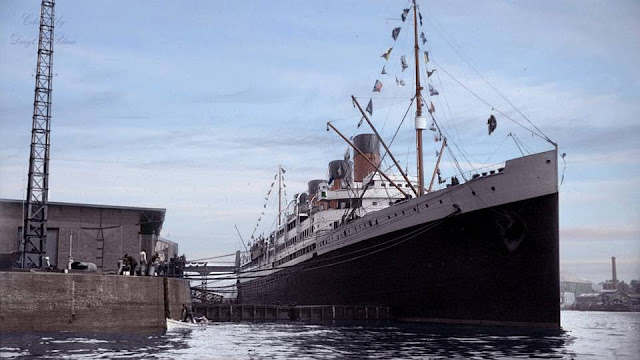



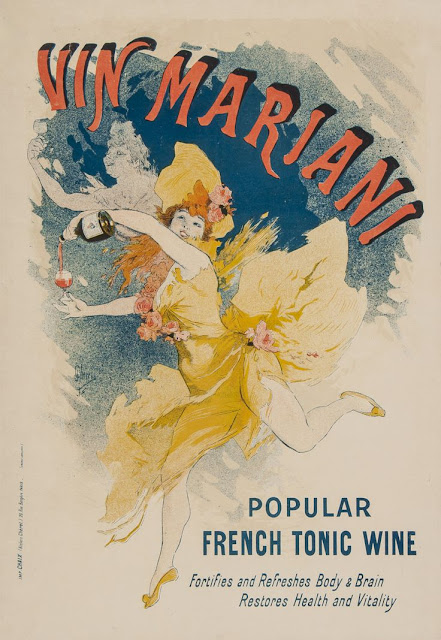


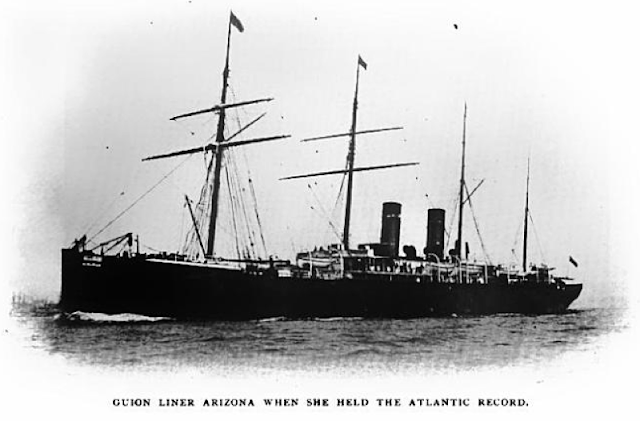

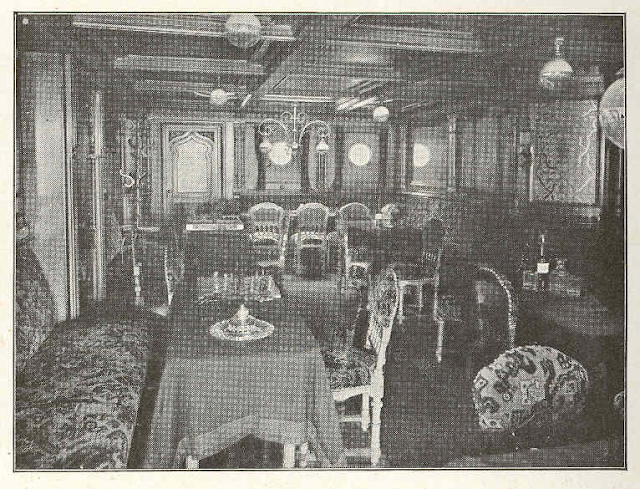

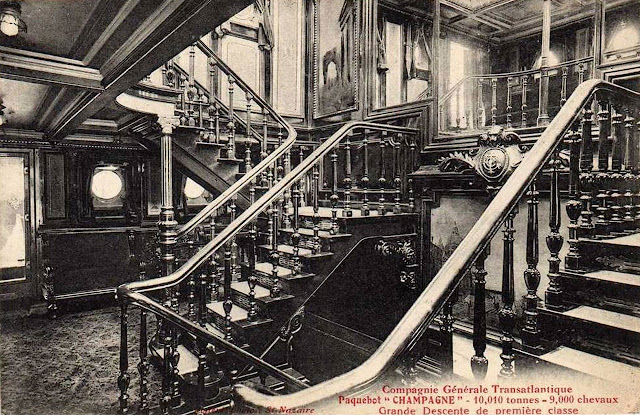











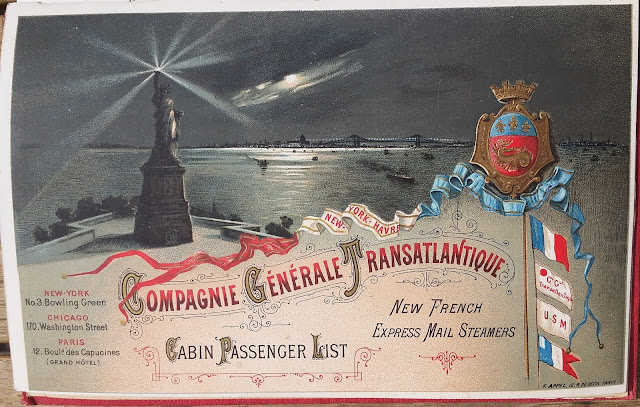

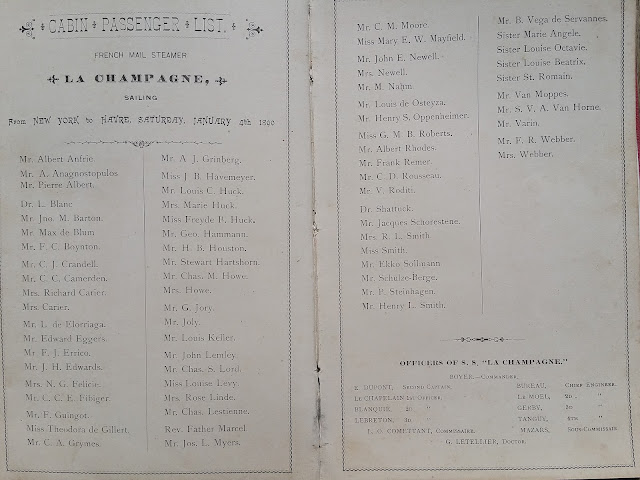
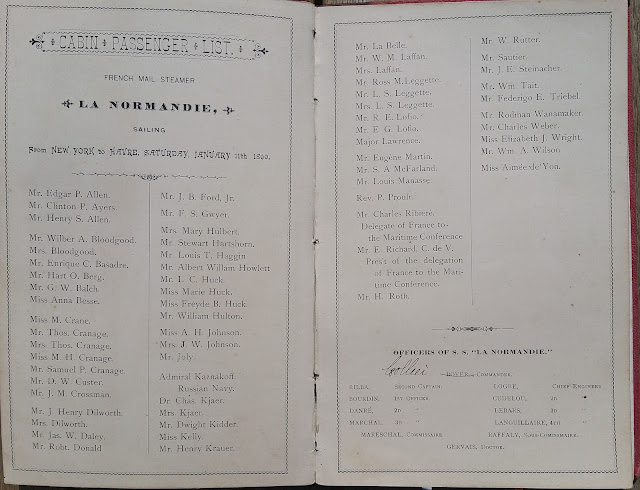
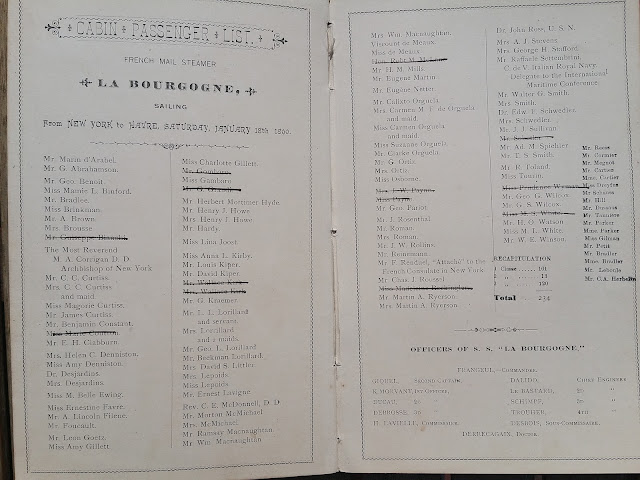
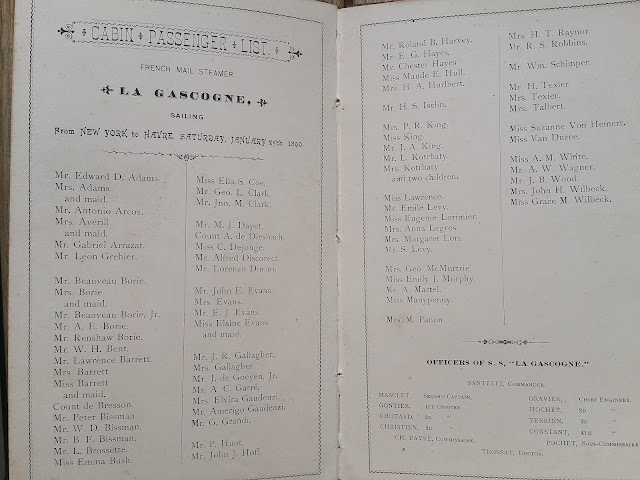
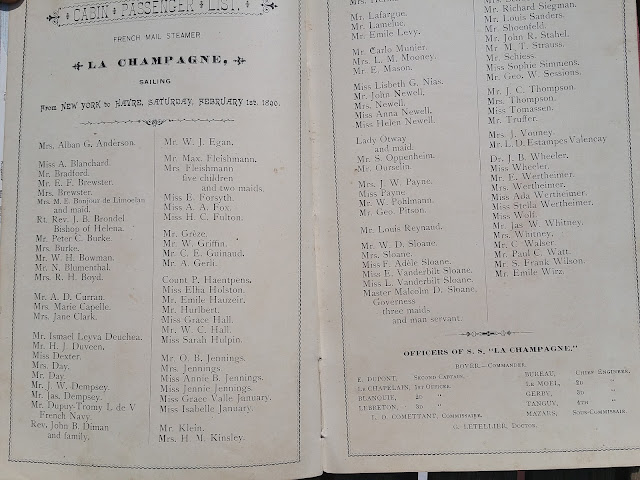
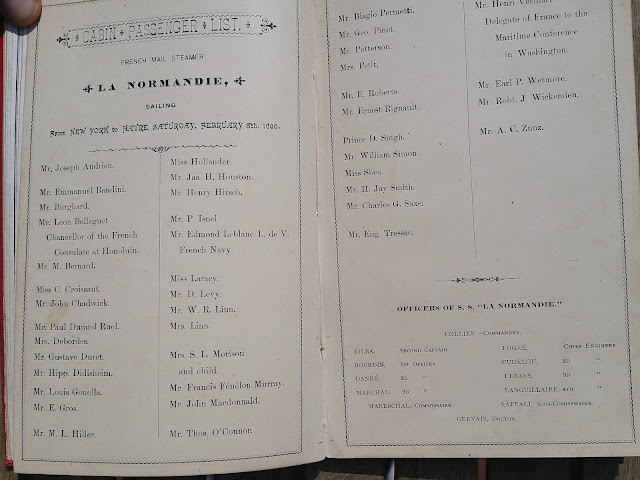

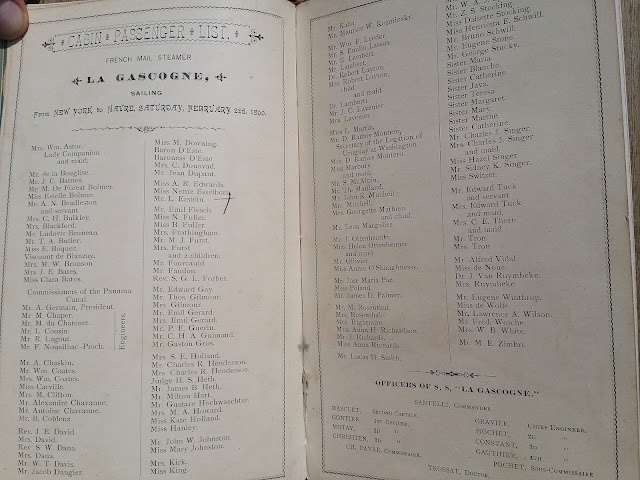
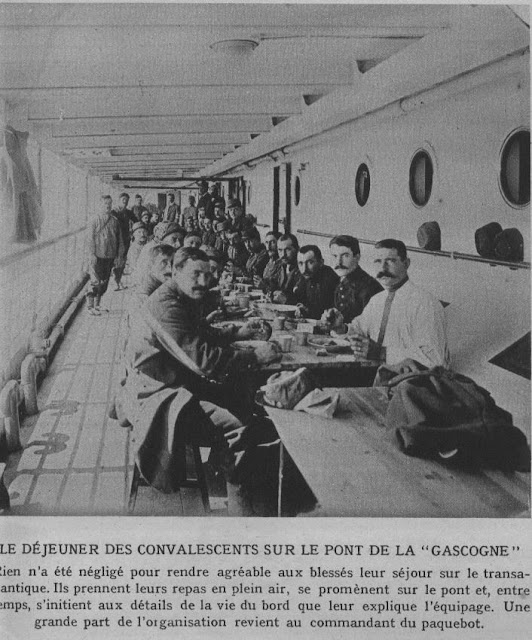
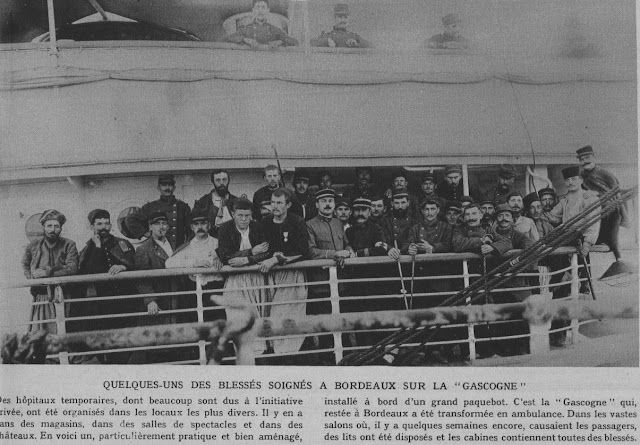

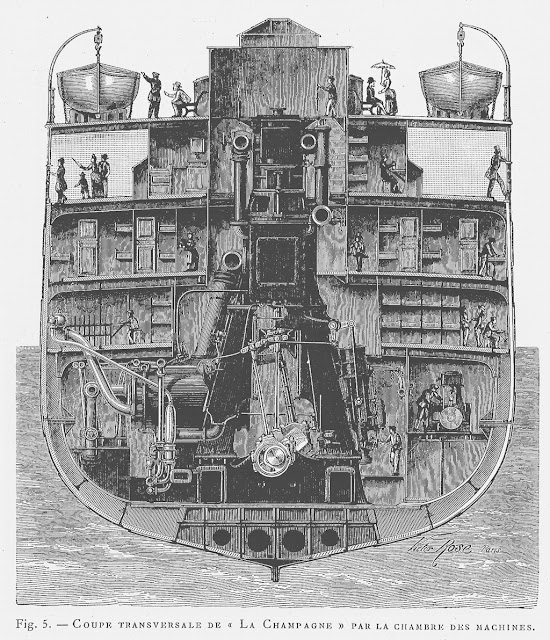
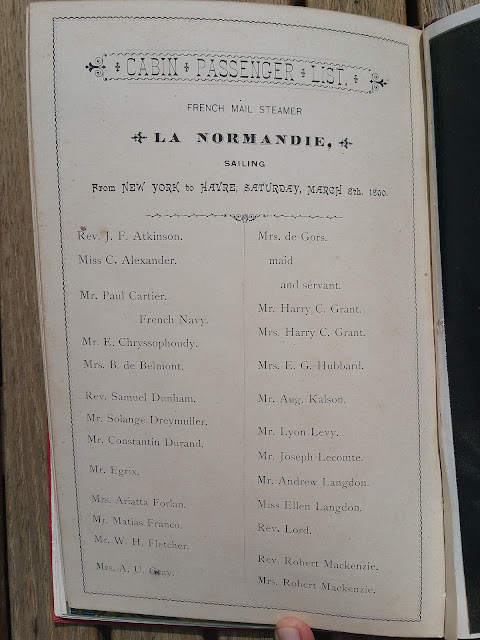
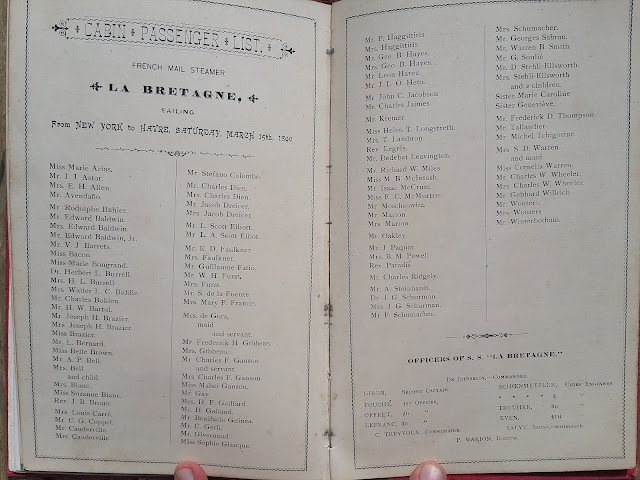





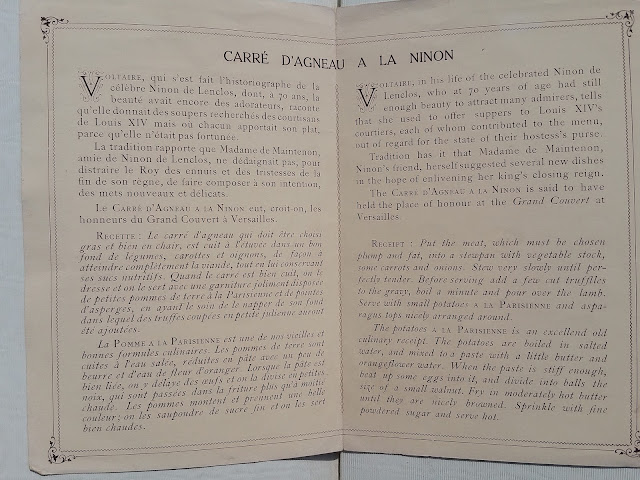

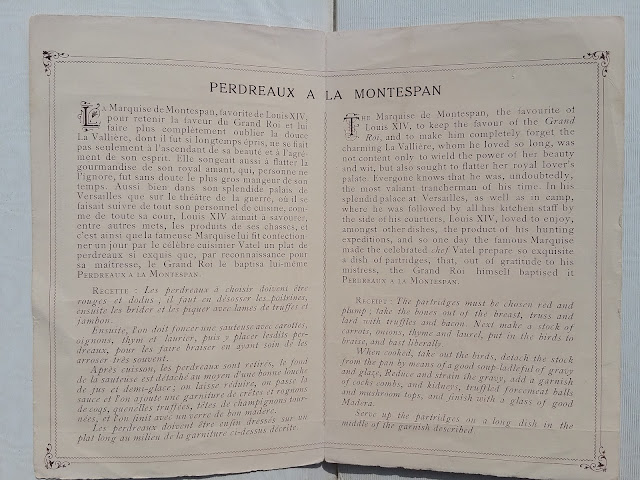

Comments
Post a Comment